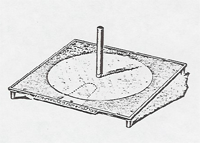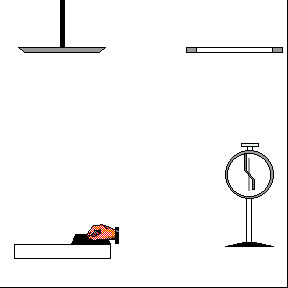- 1. Mechanics
- 2. Harmonic Motion, Waves and Sound
- 3. Matter and Thermodynamics
- 4. Electricity and Magnetism
- 5. Light and Optics
- 6. Modern Physics
- 7. Astronomy
- 8. Software and Multimedia
- 9. Index and code conversion from older manual
- External Resources
60. Electrophorus
An electrophorus consists of a flat insulator on which rests a removeable metal plate. The Lucite base of the electrophorus is charged positive by rubbing it with silk. When the metal plate is placed on it, the metal contacts the lucite in only a few spots and acquires very little positive charge. But if the metal plate is now grounded (by touching it with your finger), it acquires a large negative charge by induction.

The metal plate is now lifted off and its negative charge can be detected at some distance with an electroscope or with pith balls. The charged plate will cause a half-inch spark to jump to your knuckles (painless), or it will flash a neon or fluorescent tube briefly (best seen by turning off all lights).
The operation of charging the metal plate by induction can be repeated indefinitely, since essentially no positive charge is removed from the insulator base. You may wish to ask your class where the energy comes from, which could be used to flash a fluorescent tube indefinitely.

